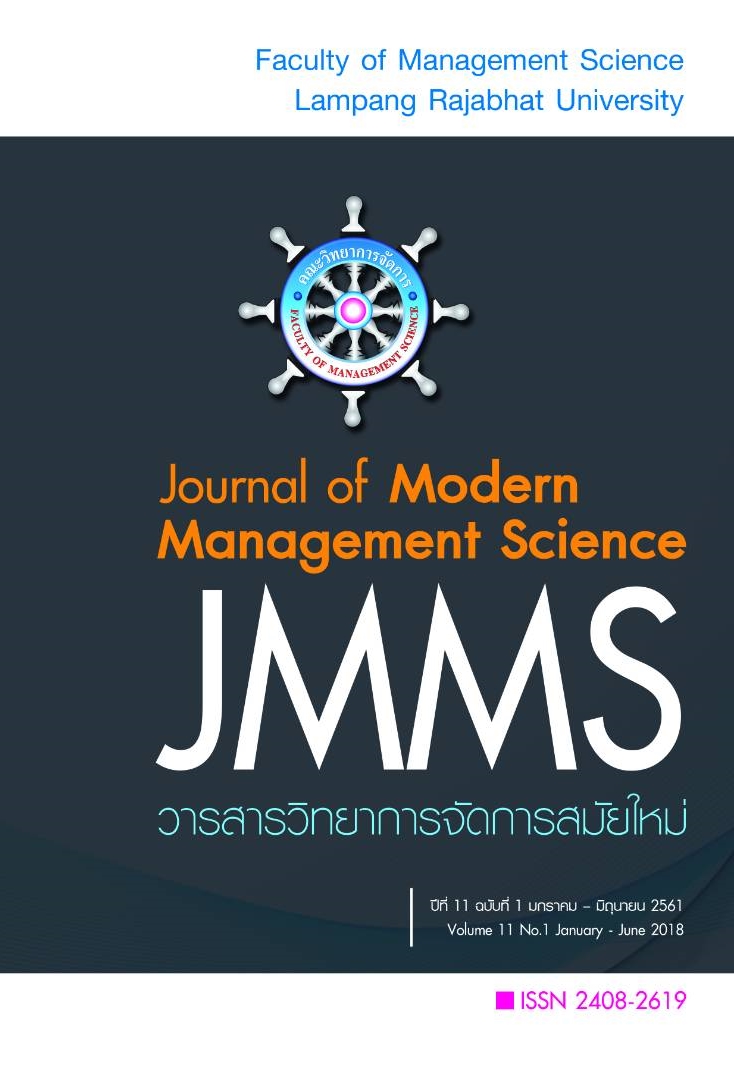The Use of Local Food Storytelling to Promote Cultural Tourism: A Case Study of Jaehom’s Crab Chili Paste
Main Article Content
Abstract
This research titled “The use of local food storytelling to promote cultural tourism: a case study of Jaehom’s crab chili paste” aimed to study and present a local food photography techniques as the element of the local food --crab chili paste-- story to promote cultural tourism.
The creation of crab chili paste story was made from in-depth interview of the head of Jaehom’s group that made crab chili paste. In addition, the study of local food photography technics as the element of the local food story was implemented by using crab chili paste as an ingredient to cook local food and fusion food. All food cooked were photographed and the photos were selected to produce public relations media which were then evaluated by the sample group.
The findings implied that to create the story of Jaehom’s crab chili paste to promote cultural tourism should include (1) a story of place (2) the photograph as a media (3) the unique story and (4) the topics that must be written are nutrition and health aspects, eat culture aspect, local wisdom aspect, and cultural tourism aspect.
The results suggest that factors that are most important for creating effective food porn are: (1) an angle of photo shot (2) the composition (3) the food presentation technic (consist of the presentation of food ingredients, side dishes, and food itself).
The opinion survey carried out in relation to the crab chili paste public relations media revealed that the participants agreed at the high level that crab chili paste dishes could be used as a means of cultural identification as well as used to promote cultural tourism.
Article Details
The article must be considered and accepted for publication by the editorial board of the Faculty of Management Science, Lampang Rajabhat University. The articles have been reviewed by a peer (peer review) and the author must update according to the suggestion if available before publication. Articles that are not considered the editorial team will inform the results of the consideration but will not send the original to the author.
JMMS is the Faculty of Management Science journal, Lampang Rajabhat University. Jmms published both print and online editions. We allow the use of articles for academic use under the scope of copyright law.
References
กรุงเทพฯ: ภาพพิมพ์. 10-139.
เวทิต ทองจันทร์. (2559). การเพิ่มเสน่ห์ในการสร้างสรรค์งานภาพถ่ายในเล่มรายการอาหาร. รายงานสืบเนื่องจาก
การประชุมวิชาการงานวิจัยและงานสร้างสรรค์ทางนิเทศศาสตร์ ครั้งที่ 6. ณ ห้องประชุมมิลลิเนียม ห้อง
ออดิทอเรียม มหาวิทยาลัยสยาม วันที่ 15 มิถุนายน 2559.
เศวต มาพวง. (2553). อาหารการกินถิ่นเหนือ. เชียงใหม่: ดาราวรรณการพิมพ์.
สุรพงษ์ คงสัตย์ และ ธีรชาติ ธรรมวงค์. (2551). การหาค่าความเที่ยงตรงของแบบสอบถาม (IOC), [ออนไลน์]. เข้าถึงได้จาก: http://mcu.ac.th/site/articlecontentdesc.php?article_ id=656&articlegroup_ id=146 สืบค้นเมื่อ 27 มีนาคม 2557.
สุนีย์ วัฑฒนายน. (2557). 6 อาหารท้องถิ่น วัฒนธรรมการกินแบบพื้นบ้าน สืบสานสู่อาเซียน. วารสาร Princess
of Naradhieas University, Journal of Humanities and Social Sciences. ปีที่ 1 ฉบับที่ 1 (มกราคม-มิถุนายน 2557). 34-44.
เอื้องอริน สายจันทร์. (2553). บทบาทรายการอาหารทางโทรทัศน์ในการสืบทอดวัฒนธรรมอาหาร. วิทยานิพนธ์
ปริญญามหาบัณฑิต สาขาสื่อสารมวลชน คณะนิเทศศาสตร์ จุฬาลงกรณ์มหาวิทยาลัย.
Buttinelli, S. and D’ Ayala, V.M. (eds.). (2017). The Taste of Arts: Cooking, Food and
Counterculture in Contemporary Practices. Fayetteville: The University of Arkansas Press.
Lavis, A. (2015). Food Porn, Pro Anorexia and the Viscerality of Virtual Affect: Exploring Eating in
Cyberspace. Geoforum (2015). http:// dx.doi.org.10.1016/j.geoforum.2015.05.014.
Spence, C., Okajima, K., Cheok. A.D., Petit. O., & Michel. C. (2016). Eating with Our Eyes: From
Visual Hunger to Digital Satiation. Brain and Cognition. http:// dx.doi.org.10.1016/j.bandc. 2015. 08.006.


